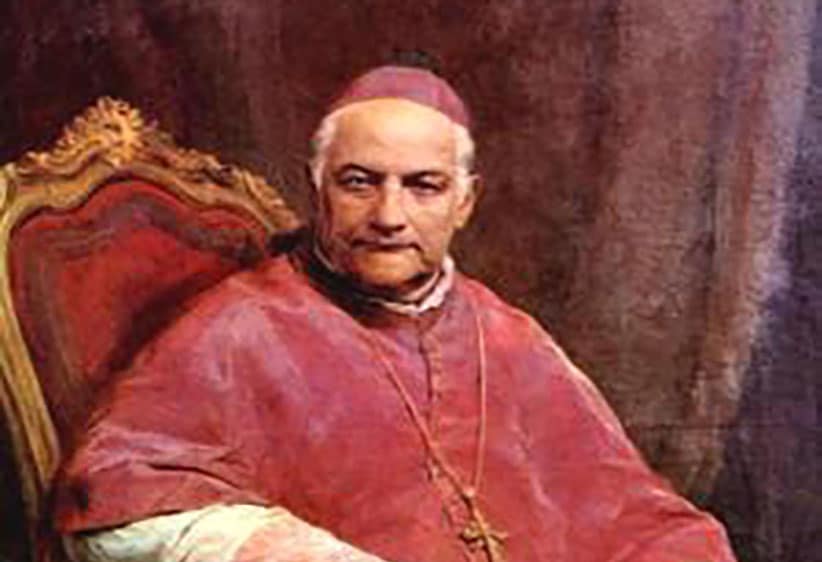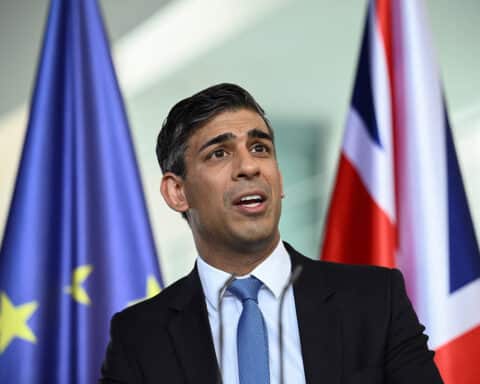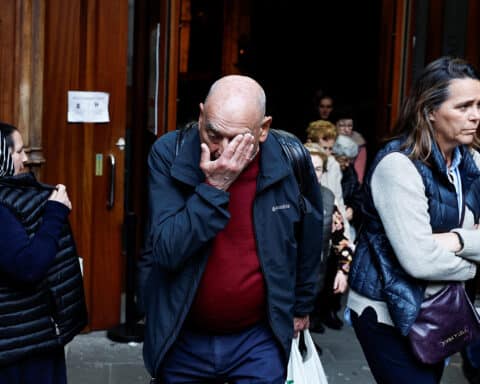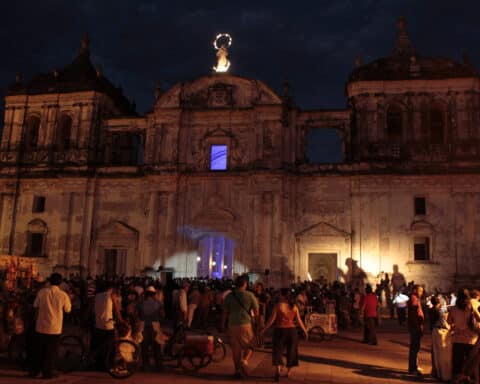MONTEVIDEO, Uruguay (OSV News) — Uruguay’s Catholic Church celebrated the beatification of Bishop Jacinto Vera May 6. Blessed Bishop Vera was not only the first bishop of Montevideo, the country’s capital, but is considered the father of the local Church.
It was a celebration like no other since Uruguay was settled by Europeans more than 500 years ago and gained independence in 1828. It was the country’s first beatification, and Bishop Vera is on the path to becoming Uruguay’s first native home-grown saint.
“This is the first time Uruguay has had this kind of celebration, and it is fitting that it was Bishop Vera, who marked a ‘before’ and ‘after’ for the Church. He took over an institution in ruins and left a vibrant Church with religious orders, seminaries and an organized laity,” Cardinal Daniel Sturla, archbishop of Montevideo, told OSV News.
Vera’s influence on Uruguay’s Catholic Church and the country has been on display since Pope Francis last December recognized a miracle attributed to the bishop, setting the stage for the beatification. Bishop Vera died in 1881 and was beatified on the anniversary of his death.
Graciela González, a retired lay Catholic who was present at the beatification Mass, said Vera was a symbol of unity for Uruguay and neighboring countries.
“Bishop Vera traveled throughout Uruguay and along the borders with Argentina and Brazil when there was still a great deal of division in the region. He helped bring our country together. He is a testimony of what faith can achieve,” she said.
González said she hoped the politicians who gathered at the beatification Mass would emulate Bishop Vera’s commitment to the country. The ceremony brought out Uruguay’s top politicians — President Luis Lacalle and his vice president, Beatriz Argimón — two former presidents, as well as Cabinet ministers, leaders of political parties, and military and police brass.
The beatification Mass, presided over by Cardinal Paulo Costa of Brasilia, capital of Brazil, as the pope’s representative, brought together two dozen bishops and two other cardinals, Daniel Sturla of Montevideo, and Mario Poli of Buenos Aires. The outdoor Mass was celebrated in the country’s famed Centenario football stadium.
Approximately 15,000 people braved the rain to watch musical and theater groups pay tribute to Bishop Vera prior to the Mass. Father Luis Ferrés got things going with a song written for Bishop Vera. The refrain — “You traveled to all the corners of the homeland, giving your heart to anyone who would receive it” — reverberated throughout the stadium as the crowd sang along.
“I think this day is of utmost importance to Uruguay and a clear message that God is present here. Bishop Vera is watching over Uruguay,” Cándido Olivera, a Uruguayan young adult, told OSV News.
The main altar was simple, adorned with candles and freshly cut branches. A side altar housed an image of the Virgin Mary — Uruguay’s patron is Our Lady of the Thirty-Three (commemorating 33 Uruguayan patriots who landed on the beaches of Agraciada to commence the liberation of their country in 1825 and place the fate of their nation at the feet of the Virgin Mary in the local church) — and some of Bishop Vera’s relics normally kept in different churches around Montevideo. A large portrait of the bishop was unveiled prior to the service.
Cardinal Costa used his homily to focus on concepts epitomized by Bishop Vera, including faith, peace and unity. He said Bishop Vera was an example of living faith and that Catholics were called to live like him.
Bishop Vera was born aboard a ship that sailed from Europe in 1813. Because of civil strife in Uruguay, his family disembarked in what is now Brazil and slowly made its way to Uruguay, where they farmed land outside the capital.
His vocation began early, and at age 18 he traveled to neighboring Argentina to attend seminary, since Uruguay lacked seminaries at the time. He returned to Uruguay after his ordination. Pope Leo XIII named him the first bishop of Montevideo.
Bishop Vera did not spend much of his time as head of the Church in the capital. He undertook three “evangelizing missions” around the country, where he officiated over baptisms, first Communions and weddings. He walked an estimated 90,000 miles during his travels prior to and after his appointment as bishop. Uruguay covers approximately 70,000 square miles.
“Uruguay was unstructured when Bishop Vera began crisscrossing the country. His presence was very important and helped formalize the country,” said Roxana Pallotta, who runs an art gallery that included an exhibit of Bishop Vera’s personal and liturgical objects in the lead up to the beatification.
“He will be the first saint from Uruguay, and when you study his life you can see why. He was not just a bishop, but lived according to his convictions and with an option for the poor and destitute,” she told OSV News.
Bishop Vera’s path to beatification was not direct. The first attempt to have him beatified came in the late 19th century and again in the early 20th century after the first recorded miracle attributed to him. The family of a 14-year-old girl on her deathbed prayed to Bishop Vera, and María del Carmen Artagaveytia recovered overnight. It was 1936. Miraculously cured, she lived a long life and died at the age of 87. The documentation of the miracle, however, was lost and the effort waylaid.
Retired Bishop Alberto Sanguinetti, who headed Uruguay’s Canelones Diocese from 2010 until 2021, got involved with Bishop Vera’s cause in the late 1990s, eventually spending 14 years as vice postulator. He was able to take on the task thanks to the 1983 reform of the law of the causes of saints.
He said there were around 2,000 documents about Bishop Vera when he started, none of which were digitized and or in any discernible order. The number of documents would grow to more than 4,000 when he finished in 2012.
“Bishop Vera died in 1881, and while it took a long time to start the beatification process, the cause never diminished. I would say that his religious, cultural and social identity in Uruguay has only grown over time,” Bishop Sanguinetti told OSV News.
Apart from schools and buildings bearing Vera’s name, one of Montevideo’s districts is also named after the newly beatified bishop.
Bishop Sanguinetti not only pushed Bishop Vera’s cause, but used a trip to Rome to lobby an old friend, Pope Francis, whom he knew for decades as Buenos Aires Archbishop Jorge Mario Bergoglio.
“I was in Rome in June 2013, just months after Bergoglio was chosen as Pope Francis. I told him I was there for Vera, and he responded that he was aware of the cause and the importance of Vera to Uruguay,” he said.
Pope Francis declared Bishop Vera venerable in 2015 and recognized the miraculous recovery of the young girl in December 2022.
Bishop Sanguinetti said Bishop Vera is an important reference point to the universal Church and his beatification will help broaden it.
“He has a rich and complex personality — an immigrant, rural worker and intellectual who cared deeply about all social groups, but with a preferential option for the poor. He was a missionary and an evangelizer, who people considered a saint while he was alive,” he said.
Lucien Chauvin writes for OSV News from Montevideo, Uruguay.





